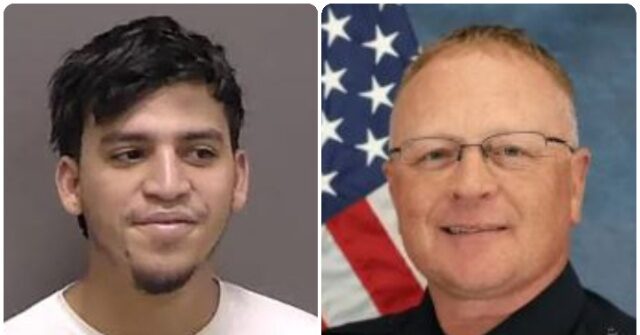In North Dakota, the growing presence of the Tren de Aragua gang has raised significant concerns, with Police Chief Pete Nielson highlighting the pressing need for federal assistance to combat the rising criminal activity attributed to gang members. As the 17th state to experience this issue, North Dakota has found itself grappling with the complexities of interstate crime. Chief Nielson emphasized the challenges faced by local law enforcement when such crimes cross state lines, underscoring the importance of federal support in effectively addressing and managing these emerging threats. He expressed frustration at the lack of federal partnership, stating that the absence of federal resources makes it increasingly difficult for local police departments to respond to these incidents effectively.
Nielson’s comments follow the arrest of Henry Theis, a 25-year-old alleged gang member connected to a series of ATM heists in West Fargo, where he reportedly stole around $100,000. Theis’s law enforcement history raises eyebrows, as he had previously been apprehended by Border Patrol in El Paso but was released by the Biden administration. His later arrest in Texas for a DWI led to another release, allowing him to ultimately travel to North Dakota, where he was soon implicated in serious criminal activity. This chain of events highlights significant gaps in the management of illegal immigration and criminal behavior, which local law enforcement feels unprepared to address without federal assistance.
During the traffic stop leading to Theis’s arrest, Chief Nielson’s officers discovered over $24,000 in cash in his vehicle, raising additional concerns about the impact of illegal immigrants engaging in criminal acts. Nielson expressed his frustration with the situation, questioning why federal officials did not intervene given the scale of the crime and the legal status of the suspect. His statements reflect a broader sentiment within the local community and law enforcement regarding the challenges posed by individuals engaging in high-level criminal activities, particularly those who are undocumented and seemingly able to evade repercussions.
The frustrations felt by Chief Nielson have led him to speculate that a change in federal administration might bring about a new approach to immigration enforcement and crime prevention. He cited President-Elect Donald Trump’s stance on immigration and expressed optimism that his department could work alongside federal authorities to assist in the apprehension of illegal aliens involved in criminal activities. Nielson indicated a willingness to support any efforts for mass deportation and urban enforcement operations led by the incoming administration, highlighting the police department’s readiness to cooperate with federal directives to enhance community safety.
Bob Price, a senior contributor for Breitbart Texas, sheds light on the developing situation, emphasizing that the issues surrounding Tren de Aragua gang members extend beyond North Dakota. This phenomenon is indicative of larger immigration and criminal justice challenges facing many states across America. Price, who is also an established voice in discussions about border security, brings attention to how local police departments often feel overwhelmed when tackling issues that they believe fall within the federal jurisdiction, especially as criminal networks become more sophisticated in their operations.
The accumulation of evidence and testimonies from law enforcement officials like Chief Nielson reflects a critical intersection of law enforcement, immigration policy, and community safety. As small departments face the daunting task of addressing complex criminal networks without adequate federal support, there’s a growing acknowledgment of the need for a cohesive strategy that involves clear collaboration across all levels of government. The dynamic continues to evolve, posing significant questions about how best to allocate resources and authority in a manner conducive to ensuring public safety while navigating the complexities of immigration and crime prevention.

